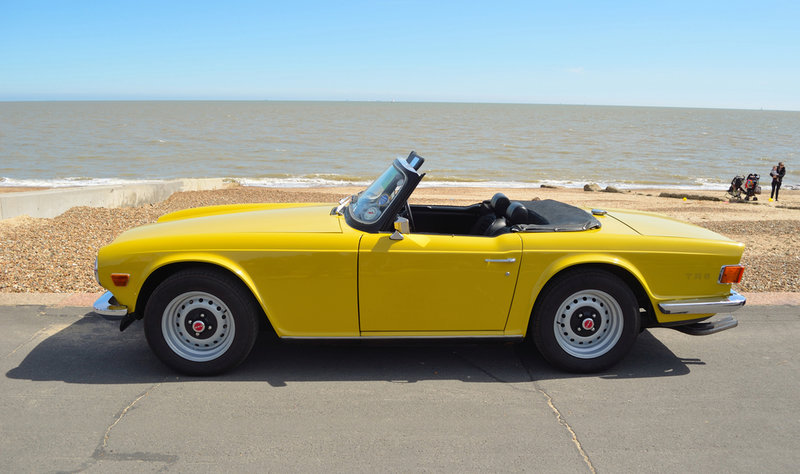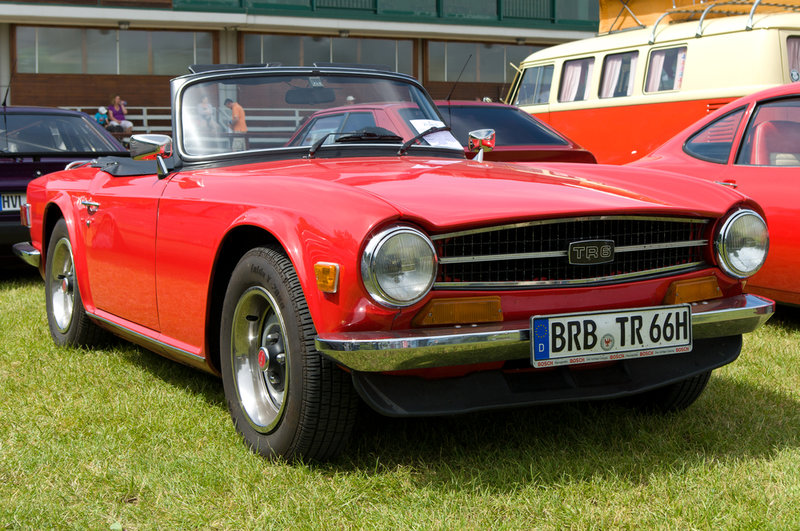Among classic autos, the Triumph TR6 holds a special place in the hearts of most automotive enthusiasts. The sports car was in production from 1968 to 1976, meaning that the 1973 model year was close to the end of its run. Throughout the entire production run, 94,619 TR6s were produced, with an estimated 4,782 left. Throughout the entire run of the TR6, there were minimal changes. Therefore, a 1973 TR6 should be very similar to any other model year you come across.

source: ShutterStock
Based on the TR5 and TR4
Although the TR6 appeared to be an all-new model to most people, it was actually based on the TR5 with a smart facelift from Karmann. If you put it next to the TR5, you’d notice that just the rear and front panel work are different. Despite this, the reshaping into a modern style was very effective, particularly with the radiator grille that appeared to “grin.” The TR6 also borrowed from the TR4, taking the underpinnings, doors, and windscreen. To set it apart from these other Triumph models, the Triumph TR6 got wider wheels with standard steel and chrome trims. The interior got extra padding on the seats, but the engines were familiar.
Under the Hood
That familiar engine was a 2.5-liter straight-6 complete with Lucas mechanical fuel-injection globally and in the UK or carburetion in the United States. The UK variation could reach 60 mph in 8.2 seconds and a 120 mph top speed. The 1973 and other years of the TR6 used a 4-speed manual transmission as standard. This featured the option of an electrically switched overdrive for second through fourth gears on the first models and just third and fourth later on. The rear featured drum brakes with discs in the front. Other important structural components of the TR6 included the independent rear suspension, the 15-inch wheels, and the rack and pinion steering. Drivers could opt for a limited-slip differential and a rear anti-roll bar.
Interior Features
Inside the TR6, drivers got full instrumentation, bucket seats, and pile carpet for the trunk and floors. The dashboard was a nice walnut veneer. There was also the option of a steel hardtop, but it required two people for deployment. Unfortunately, the cabin of the TR6 was cramped and narrow, without a second row. Instead, there was luggage space behind the seats plus enough room for longer legs. Features like that dashboard made up for this.

source: ShutterStock
Feeling Behind the Wheel
If you get the chance to get behind the wheel of the TR6, you will have more than enough room, although getting into position can be mildly challenging. Compared to other two-seaters of the time, the TR6 was fairly large, making it feel similar to a grand tourer in some ways when behind the wheel. The engine delivers a smooth and refined feel, and you get the firm ride you associated with a sports car. You also get excellent road feedback.
